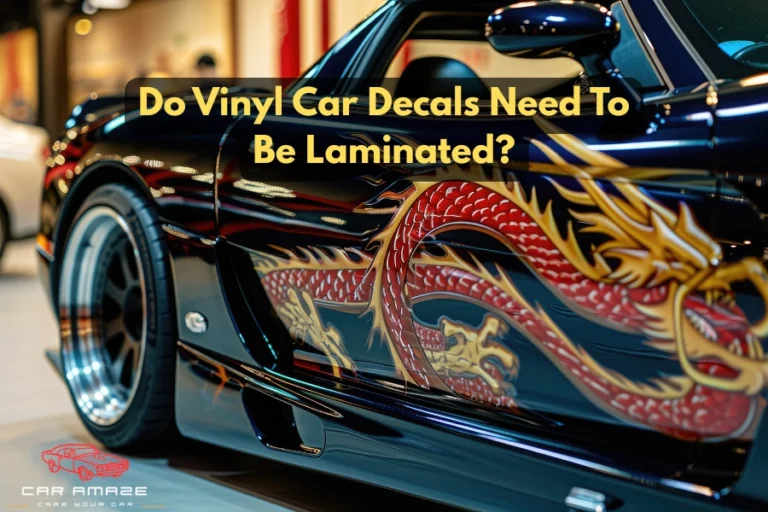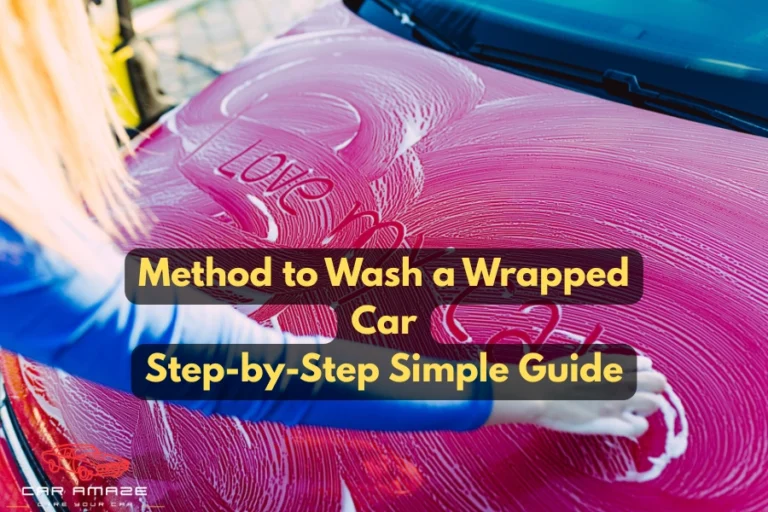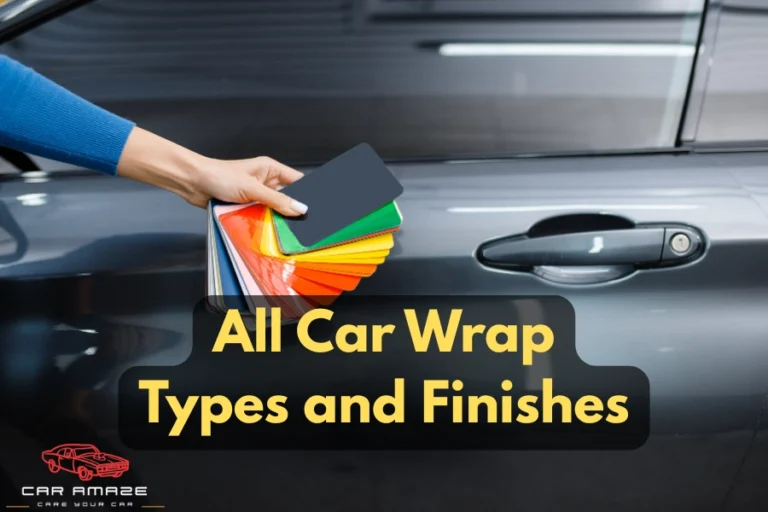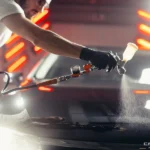How Long Does It Take to Wrap a Car? Insights and Tips
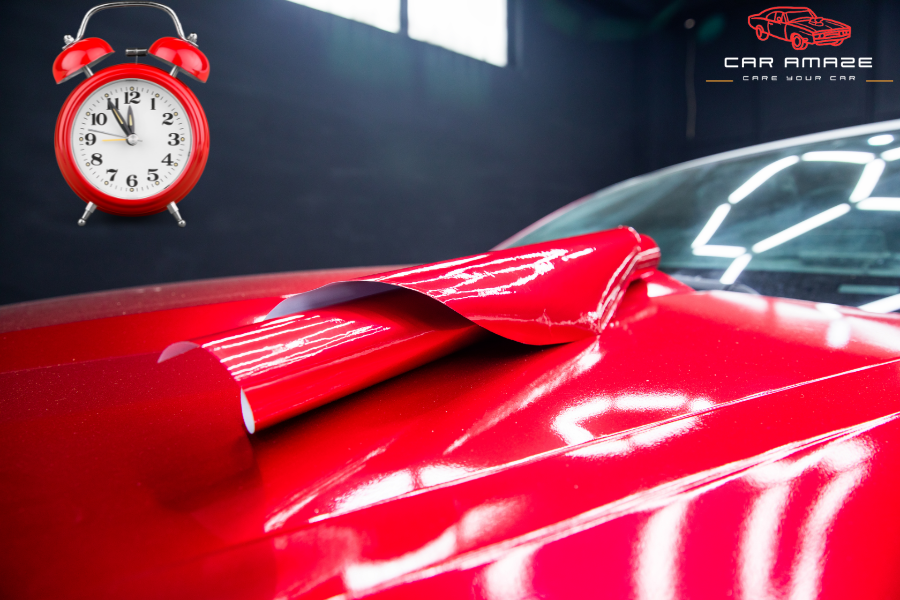
Wrapping a car means covering its body and parts with a special vinyl material. There are three reasons for wrapping a car, including adding cool designs, changing car color, and protecting the car paint. But how long does it take to wrap a car? You will find this information in this detailed guide. You will also learn about the typical steps involved in the wrapping and potential mistakes to avoid.
Average Time to Wrap a Car (Quick Answer) 📄
The average time to apply a full wrap on a small car is around 1 – 2 days, and on big cars it can take around 3 to 4 days. The partial car wrapping takes less time, like 8 to 12 hours, because you wrap only some parts. The factors that affect the wrap application time are the size and shape of the vehicle, the design complexity, and the skill of the wrap installer.
Table of contents
- Prepare steps before wrapping
- How long does it take to wrap a car?
- Factors affecting wrap time
- Vehicle wrapping process
- Common wrapping mistakes to avoid
- Professional vs. DIY wrapping
- Conclusion
- FAQs
Prepare steps before wrapping
There are some important preparation steps that you must follow before beginning the wrapping.
- Thoroughly clean the car body to remove the dirt and grease. The vinyl wrap sticks better on a clean surface rather than a dirty, oily, or rough surface.
- Repair the dents and scratches because the wrap adheres effectively to the smoother surface.
- Calculate the size of each car part and determine how much wrap you need for your car.
- Gather all the necessary tools for wrapping, such as vinyl wraps, a cutting blade, and other tools.
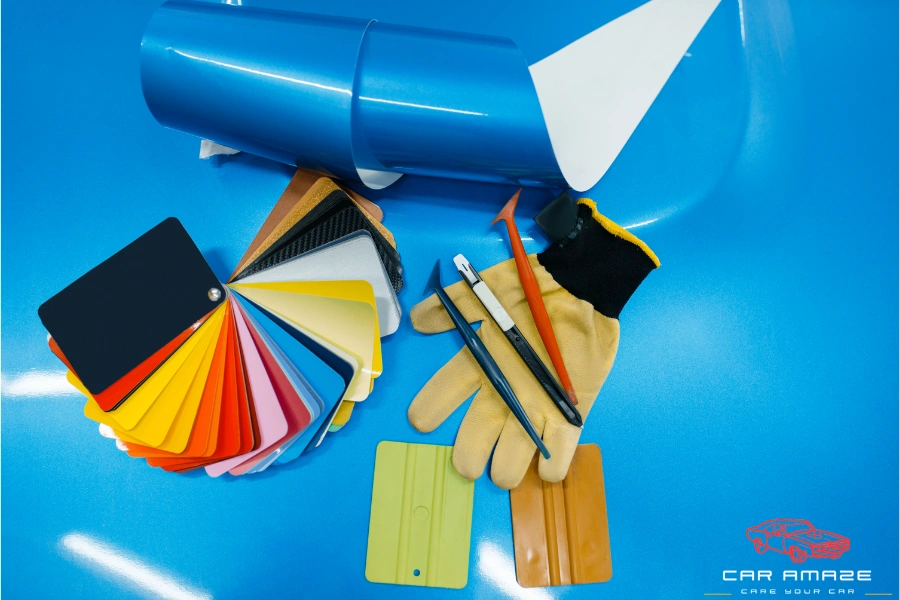
How long does it take to wrap a car?
The actual duration of the car wrapping depends on your needs, such as a partial or full wrap.
Partial wrap on the car
The partial wrap involves covering only a few parts of the car, such as the hood, roof, or doors. A partial wrap is a quick process and can take around 8 hours to 12 hours. However, the time still varies depending on the size of the area being covered, the surface type, and the complexity of the design. For more creative and complex partial car wrap designs, the wrapping expert can take around 1 day to complete the design.
Full wrap on car
The full wrap means wrapping the entire car, which can take around 1 to 2 days for small cars. For big cars, the wrapping process is more complex and can take around 2 to 4 days. The time is mostly spent creating the design for the wrap and wrapping on the curved surfaces. Wrapping each part of the car, including mirrors, bumpers, and grills, takes time, skills, and patience.
Factors affecting wrap time
There are some more factors that affect the wrap time, including the size of the vehicle, the complexity of the surface, the wrap design, the experience of workers, and the quality of the wrapping material.
Size and type of the vehicle
The size and type of your car impact the actual duration of wrapping. Large trucks and vans take more time due to their size, whereas small cars take less time. Moreover, the type and shape of the vehicle part also help you determine how long it takes to wrap a car. For example, the curved surfaces usually take more time than the plain and smooth surfaces.

Complexity of the design
Simple and single-color wrap designs are easier and quicker to apply. In comparison, complex car wrap ideas take more time during the design process, which increases the wrapping time. So, how long does it take to wrap a car? The answer depends on the complexity of the wrap design.
Skills and experience of installers
The skills and experience of the person who installs the wrap also affect the duration. The expert installer can quickly wrap the curved and tricky surfaces without any mistakes. Beginners can take more time to wrap a car, and sometimes, they might be unable to cover the curves and edges.
Preparatory work required
The condition of the body and other parts of the car affect the wrapping time and quality. If the car has many dents, scratches, or rust, fixing them will take time. Do not apply the wrap to dents and scratches because it will look very bad and will not stick properly. Cleaning and repairing the surface helps to install the wrap perfectly, which looks smooth and lasts a long time.
Quality of the material used
Another common factor that affects the wrap installation time is the quality of the materials. High-quality vinyl wrap materials are easier and quicker to install and last longer. In contrast, low-quality materials take more time to install and also do not last long. Although the high-quality wrap costs more, it improves the speed and quality of work.
If the paint on your car is very rough and looks bad, you might need to repaint the car first. Determine which parts of the car need repainting and how much paint you will require.
Vehicle wrapping process
Let’s discuss the actual steps involved in the general wrapping process to help you estimate the average wrapping duration.
Cleaning and surface preparation
The first step in the wrapping process is cleaning and preparing the car surface. Remove any dirt, oil, or dust that could prevent the vinyl from sticking properly. This step is essential because it helps the wrap to stick better on the car and last longer.

Design and material selection
Select the material and create the design based on your needs and demands. We recommend you choose a high-quality material and make sure that it is suitable for your design. The time involved in this process depends on the complexity of your smart car wrap ideas.
Preparing the vinyl wrap
Once the design and materials are chosen, the vinyl wrap needs to be prepared. This involves cutting the vinyl wrap according to the design and shape of each car’s part. The cutting and preparation of the vinyl wrap also influence the average time of wrap installation.
Wrapping around curves
Wrapping around the edges and curves is challenging and can take much time. So, how long does it take to wrap a car? It also depends on the total edges and curves of the car. Stretch the wrap properly on curves to avoid wrinkles and bubbles. Make sure that you have the right tools and know the proper techniques to handle these difficult areas.
Trimming and finishing touches
After applying the wrap on all the surfaces of the car, you must finish and trim it. To give a professional look to the wrap, cut away the excess wrap and smooth the surface. This step does not take much time but is still a factor that influences wrapping installation time.
Quality control and inspection
The final step is inspecting the wrap for any flaws or imperfections. It includes checking for bubbles, wrinkles, or misaligned sections. Many wrapping installation workers skip this step, but it is very important. This step makes sure that the wrap is installed perfectly on the car’s surface.
Common wrapping mistakes to avoid
You must avoid the common wrapping mistakes to ensure the perfect and flawless wrap installation. This table highlights the common wrapping mistakes and solutions to avoid them.
| Mistake | Description | How to avoid |
| Not cleaning the car | Dirt and grease prevent the vinyl from sticking well. | Thoroughly wash and dry the car before starting. |
| Rushing the process | Hurrying can lead to mistakes like bubbles and wrinkles. | Take your time and work carefully. |
| Using incorrect tools | Wrong tools can damage the vinyl | Use the recommended tools for vinyl wrapping. |
| Overstretching the vinyl | Stretching too much can cause the vinyl to tear or wrinkle. | Apply even pressure when stretching. |
| Poor alignment | Misalignment makes the wrap look unprofessional. | Measure and align the vinyl carefully. |
| Ignoring bubbles | Bubbles create an uneven surface and look bad. | Smooth out bubbles as soon as they appear. |
| Not fixing dents or scratches | Dents and scratches affect the wrap smoothness | Repair any dents or scratches before wrapping. |
| Skipping edge sealing | Unsealed edges can peel over time. | Ensure all edges are securely sealed. |
Professional vs. DIY wrapping
Installation of wrap from experts costs more but ensures perfect and high-quality wrapping. In comparison, installing the wrap yourself is affordable, but it takes more time and may produce bad results. However, you can perfectly install the wrap if you have enough skills and the right tools. Whether you go with liquid wrapping a car or use normal vinyl wrap, the process requires skills as well as the right equipment.
Conclusion
So, how long does it take to wrap a car? The answer depends on the size of the car, the shape of the surface, the complexity of the design, the skills of the workers, and the material quality. Whether you do it yourself or hire a professional, properly prepare the surface and install the wrap gently and carefully.
FAQs
How long does it take to wrap a car?
For small cars, the full-body wrap design and installation can take around 1 day. In contrast, the wrapping process can take around 2 to 3 days for big vehicles like vans, buses, and trucks.
How long does it take to PPF wrap a car?
PPF (Paint Protection Film) wrapping usually takes 2 to 3 days. This time period includes the design selection, surface preparation, design creation, and installation time.
Can I remove the car wrap myself?
Yes, you can remove the wrap yourself if you have the skills and the right tools. Otherwise, avoid removing the wrap yourself because it may damage the car paint or surface.
Is it cheaper to wrap or paint a car?
Wrapping is generally cheaper than a high-quality paint job and offers more design flexibility.
Can I wash my car after wrapping it?
Yes, you can wash the car after wrap installation, but please wait at least 48 hours after installation. During this time period, the wrap will perfectly adhere to the car and will not be damaged upon washing.
